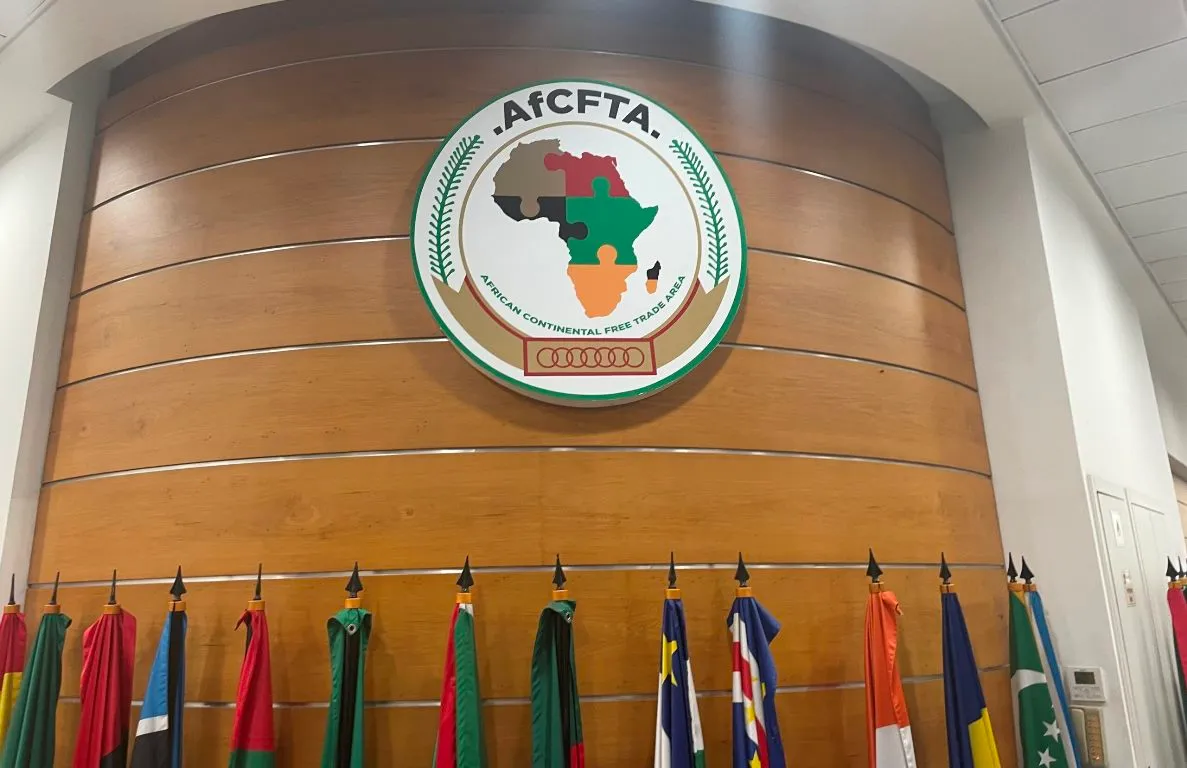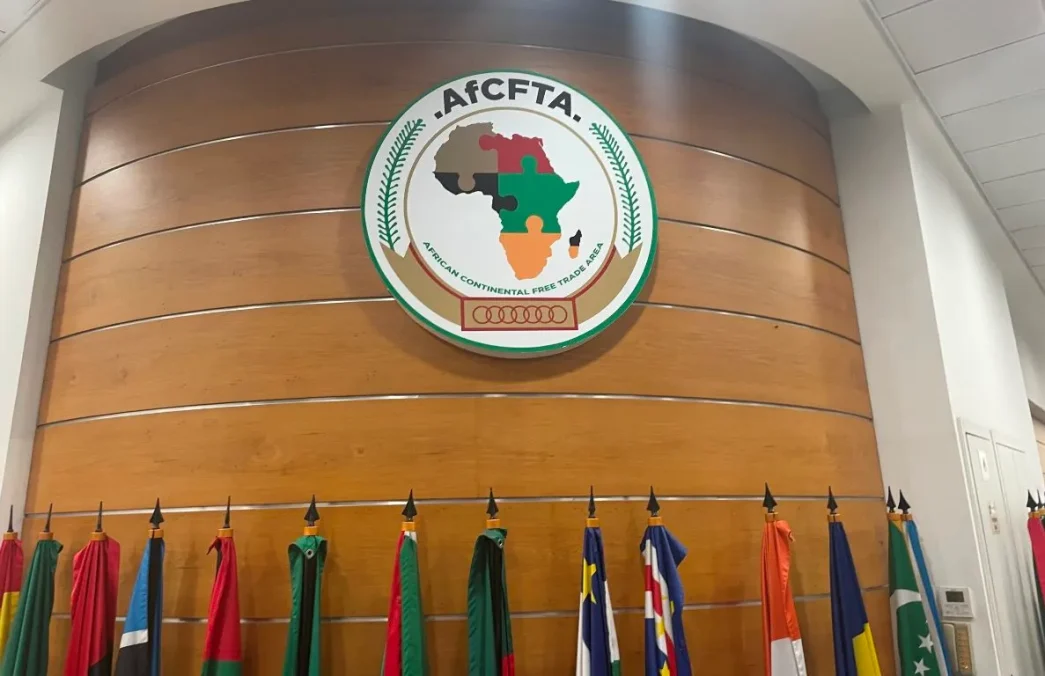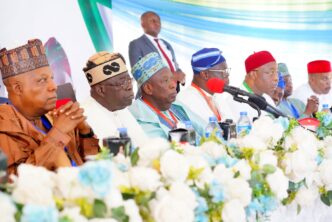BY COLLINS OKEKE AND MARY-CYNTHIA OKUNDAYE
The African Continental Free Trade Area (AfCFTA) represents one of the most ambitious economic integration projects in history. Officially operational since January 1, 2021, the AfCFTA creates a market of 1.3 billion people with a combined GDP of approximately $3.4 trillion, making it the largest free trade area in the world by number of participating countries. As of today, 54 out of 55 AU member states have signed on, signalling a strong political will to dismantle economic borders across the continent.
While the AfCFTA aims to accelerate intra-African trade by creating a single, liberalised market that reduces tariffs, its true transformative power lies in addressing non-tariff barriers (NTBs). These less visible yet more pervasive obstacles severely restrict cross-border trade and often impose greater costs on businesses than tariffs themselves. This article examines these non-tariff barriers within the AfCFTA framework, with a specific focus on Nigeria, analysing their economic impact and proposing strategic interventions for policymakers and businesses.
The Nature of Non-Tariff Barriers in Africa
Advertisement
Non-tariff barriers in Africa manifest through a complex array of regulatory, administrative, and physical obstacles that collectively impede cross-border trade. Administrative hurdles include excessive documentation requirements, with a single transaction sometimes requiring over 40 different documents submitted to multiple government agencies, and paper-based processes vulnerable to delays and corruption. Regulatory fragmentation compounds these challenges, as products meeting standards in one country require expensive re-testing to enter neighbouring markets, with testing costs often exceeding 5% of the product’s value. These regulatory obstacles are further exacerbated by technical barriers such as differing labelling requirements and inconsistent inspection procedures at border points, creating unpredictable delays that particularly disadvantage small and medium enterprises lacking resources to navigate multiple compliance regimes.
Beyond these administrative and regulatory hurdles, physical infrastructure limitations further compound Africa’s trade challenges. Poor transportation infrastructure, limited rail connectivity, and inefficient port operations drive logistics costs to 40-60% of total product costs, compared to just 6-8% in developed markets, with Nigerian businesses often spending more on transportation and border delays than on manufacturing processes. Meanwhile, information asymmetries leave traders struggling to access reliable data about market entry requirements, while linguistic diversity across Anglophone, Francophone, Lusophone, and Arabophone regions creates additional communication challenges. These combined barriers create a fragmented continental market where intra-African trade remains at approximately 15% of the continent’s total trade, compared to intra-regional trade levels of 67% in Europe and 61% in Asia, revealing the substantial untapped potential that the AfCFTA aims to unlock through its focus on non-tariff barrier elimination.
AfCFTA’s Approach to Addressing Non-Tariff Barriers
Advertisement
The AfCFTA framework explicitly acknowledges the critical importance of eliminating non-tariff barriers and outlines several innovative mechanisms to support this goal. The foundation of this approach is captured in Article 4(a) of AfCFTA, which states: “State Parties shall progressively eliminate tariffs and non-tariff barriers to trade in goods.” Building on this commitment, the agreement establishes a comprehensive strategy for addressing NTBs through multiple complementary approaches.
Central to this strategy is the Non-Tariff Barriers Mechanism, which establishes a continental system for reporting, monitoring, and resolving trade obstacles. Through an online portal (www.tradebarriers.africa), businesses can report NTBs they encounter, which then triggers a time-bound resolution process involving the relevant national authorities. This mechanism ensures transparency and accountability in the management of trade barriers while giving businesses a direct channel to address obstacles they face.
The agreement also promotes regulatory cooperation and harmonisation through Annexes 6 and 7 on Technical Barriers to Trade (TBT) and Sanitary and Phytosanitary (SPS) measures. These provisions encourage member states to work towards mutual recognition and eventual alignment of standards, aiming to reduce the duplication of testing and certification requirements and promote consistency in the treatment of goods across borders. This harmonisation is critical for Nigerian exporters who currently face a patchwork of differing requirements across potential markets.
Further supporting trade facilitation, the AfCFTA builds on the foundations of the WTO Trade Facilitation Agreement by promoting simplified documentation and improved coordination among border agencies. Article 15 on Trade Facilitation reinforces this by stating: “State Parties shall take appropriate measures, including arrangements regarding trade facilitation, in accordance with the provisions of Annex 4 on Trade Facilitation.” Similarly, Article 14 addresses customs cooperation, establishing a framework for reducing administrative burdens that have historically slowed cross-border trade.
Advertisement
The agreement also emphasises the adoption of technology to modernise trade processes. This commitment is reflected in the Preamble to the Protocol on Trade in Goods, which affirms that State Parties are “committed to expanding intra-African trade through the harmonisation, coordination of trade liberalisation and implementation of trade facilitation instruments across Africa.” These digital solutions promise to increase efficiency, transparency, and ease of doing business within the African trade environment, potentially transforming how Nigerian businesses engage with regional markets.
While the AfCFTA has established this comprehensive framework for addressing non-tariff barriers, translating these mechanisms from paper to practice requires navigating complex political and economic realities across member states. The early phases of implementation reveal both promising developments and persistent challenges that illuminate the path forward for countries like Nigeria seeking to maximize benefits from the agreement.
Early Implementation Challenges and Successes
Despite the comprehensive framework established by the AfCFTA, the implementation of non-tariff barrier reduction measures continues to face significant challenges. Institutional capacity constraints pose a substantial obstacle, as many member states, including Nigeria, lack the technical expertise, financial resources, and robust institutional frameworks required to carry out complex regulatory reforms and trade facilitation initiatives. These gaps hinder their ability to effectively translate AfCFTA commitments into practical, on-the-ground changes that would benefit traders.
Political economy considerations further complicate implementation efforts. Vested interests in maintaining certain trade barriers, concerns about potential revenue losses from liberalised trade, and underlying protectionist sentiments contribute to resistance in some sectors. These domestic political factors can dilute the momentum for reform and create uneven implementation across the continent. The AfCFTA Secretariat faces the additional challenge of coordinating implementation across 54 countries with diverse economic realities and differing levels of commitment to the agreement’s objectives, making monitoring and enforcement particularly difficult.
Advertisement
Nevertheless, early implementation efforts have produced encouraging results that demonstrate the potential of the framework when effectively applied. By mid-2023, more than 600 specific NTBs had been reported through the AfCFTA’s online mechanism, with roughly 35% successfully resolved. Notable achievements include the harmonisation of vehicle standards among East African Community members, the introduction of simplified trade regimes for small-scale traders in several regional economic communities, the launch of coordinated border management initiatives along key trade corridors, and the establishment of mutual recognition arrangements for certain product certifications. These incremental successes provide a roadmap for Nigeria and other countries to follow as they work toward fuller implementation of the agreement’s provisions.
These early successes demonstrate that the 15% intra-African trade figure mentioned earlier can be substantially increased when targeted NTB reduction measures are effectively implemented. The resolution of 35% of reported barriers provides tangible evidence that the AfCFTA mechanisms can deliver practical results when properly utilized.
Advertisement
Strategic Priorities for Accelerating NTB Elimination in Nigeria
The implementation challenges outlined above have particular implications for Nigeria as Africa’s largest economy. To overcome these obstacles and capitalise on the AfCFTA’s potential, Nigeria must develop targeted strategies that address both the continental barriers and country-specific constraints. The following strategic priorities offer a roadmap for Nigeria to navigate these complexities and transform challenges into opportunities for economic diversification and growth.
Advertisement
For Nigeria to fully capitalise on the opportunities presented by the AfCFTA, a strategic approach to eliminating non-tariff barriers is essential. This approach must begin with strengthening institutional frameworks through the establishment of a dedicated national committee on NTBs comprising public and private stakeholders. This committee would monitor, report, and resolve trade obstacles affecting Nigerian businesses while developing a prioritised action plan for eliminating the most damaging barriers. Coordination with the AfCFTA Secretariat would ensure Nigeria’s interests are effectively represented at the continental level and help address cross-border issues that cannot be resolved unilaterally.
While strong institutional frameworks provide the foundation for addressing NTBs, practical reforms to trade procedures represent the next critical step in removing day-to-day obstacles faced by Nigerian businesses. Nigeria’s customs services and border procedures require significant upgrading through the implementation of electronic documentation systems, development of an integrated single window platform, establishment of predetermined release times, and strengthening of risk management systems. These improvements would reduce the administrative burden on traders and accelerate the movement of goods across borders, directly addressing one of the most persistent non-tariff barriers faced by Nigerian businesses.
Advertisement
Alongside procedural reforms, addressing technical barriers to trade requires focused attention on standards and certification systems. Nigeria should work to align its industrial standards with continental frameworks by strengthening the Standards Organisation of Nigeria, pursuing mutual recognition agreements with key trading partners, and upgrading testing laboratories to international accreditation standards. Such harmonisation would eliminate the need for duplicative testing and certification, substantially reducing compliance costs for exporters.
Strategic infrastructure investments are equally essential for overcoming physical barriers to trade. Priority should be given to developing the Lagos-Abidjan corridor, upgrading border post facilities with neighbouring countries, improving last-mile connectivity between industrial hubs and trade gateways, and enhancing digital infrastructure to support e-commerce growth and electronic trade documentation. These investments would address the logistical challenges that currently inflate transportation costs and delay the movement of goods.
Nigeria should also prioritise capacity building across both public and private sectors while focusing initial NTB reduction efforts on high-potential export sectors, including processed agricultural products, light-manufactured goods, pharmaceuticals, automotive components, and textiles. Targeted support for these sectors would maximise the impact of limited resources and create success stories that could catalyse broader engagement with the continental market.
Technology and innovation must underpin all these efforts. Nigeria should advocate for the development of a continental digital trade platform, promote additional mutual recognition agreements, harmonise trade documentation, and leverage emerging technologies such as blockchain and AI-based compliance systems to strengthen transparency and efficiency in cross-border trade. These technological solutions offer the potential to leapfrog traditional obstacles and create a more seamless trading environment.
Conclusion
While the elimination of tariffs represents a significant milestone in African economic integration, the ultimate success of the AfCFTA depends on effectively addressing the complex web of non-tariff barriers that continue to fragment the continental market. For Nigeria specifically, tackling these barriers that currently inflate logistics costs to 40-60% of total product costs represents a transformative opportunity to potentially reduce these costs closer to global benchmarks of 6-8%, dramatically enhancing competitiveness in both regional and international markets.
By implementing the agreement’s innovative mechanisms for NTB elimination, strengthening institutional capacity, and leveraging technological solutions, Nigeria can overcome the barriers that have long constrained its trade potential. The journey toward a barrier-free African market will require sustained political commitment, private sector engagement, and coordinated support from international partners, but the potential rewards of increased productivity and expanded market opportunities make a compelling case for accelerated efforts.
The real test of AfCFTA lies not in the strength of its vision, but in the quality of its implementation. Through harmonisation, digitisation, and sustained collaboration, African countries can build a trade system that is efficient, predictable, inclusive, and sustainable, with Nigeria positioned as a central player in this historic economic evolution that promises to transform Africa’s trade landscape.
Collins Okeke is an associate partner, while Mary-Cynthia Okundaye is an associate at Olisa Agbakoba Legal (OAL)
Views expressed by contributors are strictly personal and not of TheCable.











